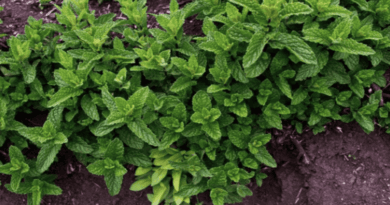Growing Coriander or Cilantro: Everything You Need to Know
Coriander, also known as cilantro, is a versatile herb widely used in various cuisines worldwide. Whether you enjoy its vibrant flavor or want to enhance your meals with fresh herbs, growing coriander in your garden is rewarding. In this guide, we’ll walk you through everything you need to cultivate this aromatic plant successfully.
Having An Idea About Coriander and Its Benefits
Coriander (Coriandrum sativum) offers multiple uses. Its leaves, known as cilantro, are perfect for garnishing, while its seeds add depth to spice blends. Moreover, it is rich in antioxidants, vitamins, and minerals, making it both flavorful and nutritious.
Growing coriander at home ensures you always have fresh herbs at hand. It reduces reliance on store-bought produce, promotes sustainability, and saves money.
Choosing the Right Location for Coriander
Coriander thrives in sunny locations. Choose a spot in your garden where the plant receives at least 4-6 hours of direct sunlight daily. However, it can tolerate partial shade, especially in hotter climates.
Ensure the soil is well-drained and rich in organic matter. Sandy or loamy soil with a slightly acidic to neutral pH level (6.2 to 6.8) is ideal. Before planting, enrich the soil with compost or aged manure for better nutrient retention.
How to Plant Coriander

- Prepare the Seeds
Use fresh coriander seeds for optimal germination. Gently crush them to split the seed husk. This step accelerates the germination process. - Sow the Seeds
Plant seeds directly into the soil, as coriander dislikes being transplanted. Space the seeds 6 inches apart in rows 12 inches apart. Cover them lightly with soil and water gently. - Time It Right
Plant coriander during the cooler months of spring or fall. It grows best in temperatures between 50°F and 85°F. In hot climates, consider successive sowing every two weeks to ensure a continuous harvest.
Caring for Your Coriander Plants
Watering
Keep the soil consistently moist but avoid overwatering. Excess water can lead to root rot. Water early in the morning to reduce evaporation and fungal issues.
Fertilizing
Coriander plants benefit from light feeding. Use an organic fertilizer every three weeks to promote healthy growth. Avoid nitrogen-heavy fertilizers, as they can cause excessive leaf growth at the expense of flavor.
Mulching
Apply a layer of mulch around the plants to retain moisture and suppress weeds. Mulching also keeps the roots cool, enhancing plant health during warmer weather.
Harvesting Coriander
Begin harvesting cilantro leaves once the plant reaches 4-6 inches in height. Use scissors to snip the outer leaves, allowing the inner ones to continue growing. For coriander seeds, wait until the plant flowers and forms seed heads. Once the seeds turn brown, cut the stems and dry them indoors before storing them.
Common Problems and Solutions
- Bolting
Coriander often bolts in hot weather. To prevent this, plant it in cooler seasons and provide partial shade during summer. - Pests
Aphids, whiteflies, and spider mites may attack coriander plants. Introduce natural predators like ladybugs or use insecticidal soap to manage these pests. - Fungal Diseases
Powdery mildew and leaf spot can occur in humid conditions. Ensure proper air circulation and avoid watering the leaves directly.
Companion Planting for Coriander
Coriander grows well alongside carrots, anise, and dill. It also attracts beneficial insects like bees and predatory wasps, which can help control pests in your garden. Avoid planting coriander near fennel, as the two can inhibit each other’s growth.
Grow Your Own Coriander Today
Coriander gardening is a straightforward and satisfying endeavor. With proper care and attention, you’ll enjoy a bountiful supply of fresh herbs throughout the year. Start your garden today, and experience the joy of growing your own coriander.
References
- University of Illinois Extension – Coriander Growing Guide
- Royal Horticultural Society – Tips for Growing Cilantro
- National Gardening Association – Coriander Planting and Care




